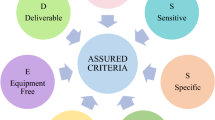Abstract
We present a simple and universal method for irreversibly bonding rigid substrate-based microfluidic devices at room temperature. In this method, a pre-patterned self-adhesive film covers and seals the area of the rigid substrate containing microchannels to create a closed microfluidic system, and then an adhesive-assisted sandwich bonding is used to reinforce the strength of bonding. The bonding can be achieved in 10 min at room temperature without requiring cleanroom facilities, complex surface modification, or employing rigorous cleaning. Despite its simplicity, this bonding method can create high-performance microfluidic devices with burst pressures over 2 MPa, but without channel clogging or microstructure deformation. The universality of this bonding method is demonstrated by applying it to the production of microfluidic devices with various rigid substrates. The simplicity, low cost, and universality of our method should allow it to be adopted by researchers lacking access to cleanroom facilities.







Similar content being viewed by others
References
Abgrall P, Low L-N, Nguyen N-T (2007) Fabrication of planar nanofluidic channels in a thermoplastic by hot-embossing and thermal bonding. Lab Chip 7:520–522
Anderson JR, Chiu DT, Wu H, Schueller O, Whitesides GM (2000) Fabrication of microfluidic systems in poly (dimethylsiloxane). Electrophoresis 21:27–40
Bart J, Tiggelaar R, Yang M, Schlautmann S, Zuilhof H, Gardeniers H (2009) Room-temperature intermediate layer bonding for microfluidic devices. Lab Chip 9:3481–3488
Bhattacharyya A, Klapperich CM (2007) Mechanical and chemical analysis of plasma and ultraviolet–ozone surface treatments for thermal bonding of polymeric microfluidic devices. Lab Chip 7:876–882
Brown L, Koerner T, Horton JH, Oleschuk RD (2006) Fabrication and characterization of poly (methylmethacrylate) microfluidic devices bonded using surface modifications and solvents. Lab Chip 6:66–73
Chen Q, Li G, Nie Y, Yao S, Zhao J (2014) Investigation and improvement of reversible microfluidic devices based on glass–PDMS–glass sandwich configuration. Microfluid Nanofluid 16:83–90
Demello AJ (2006) Control and detection of chemical reactions in microfluidic systems. Nature 442:394–402
Gu P, Liu K, Chen H, Nishida T, Fan ZH (2010) Chemical-assisted bonding of thermoplastics/elastomer for fabricating microfluidic valves. Anal Chem 83:446–452
Guo MT, Rotem A, Heyman JA, Weitz DA (2012) Droplet microfluidics for high-throughput biological assays. Lab Chip 12:2146–2155
Haeberle S, Zengerle R (2007) Microfluidic platforms for lab-on-a-chip applications. Lab Chip 7:1094–1110
Huang Z, Sanders JC, Dunsmor C, Ahmadzadeh H, Landers JP (2001) A method for UV-bonding in the fabrication of glass electrophoretic microchips. Electrophoresis 22:3924–3929
Im SG, Bong KW, Lee C-H, Doyle PS, Gleason KK (2009) A conformal nano-adhesive via initiated chemical vapor deposition for microfluidic devices. Lab Chip 9:411–416
Kappl M (2009) Surface and interfacial forces. Wiley, Weinheim
Lin C-H, Chao C-H, Lan C-W (2007) Low azeotropic solvent for bonding of PMMA microfluidic devices. Sensors Actuators B Chem 121:698–705
Liu J, Qiao H, Liu C, Xu Z, Li Y, Wang L (2009) Plasma assisted thermal bonding for PMMA microfluidic chips with integrated metal microelectrodes. Sensors Actuators B Chem 141:646–651
Mao P, Han J (2005) Fabrication and characterization of 20 nm planar nanofluidic channels by glass–glass and glass–silicon bonding. Lab Chip 5:837–844
Pan Y-J, Yang R-J (2006) A glass microfluidic chip adhesive bonding method at room temperature. J Micromech Microeng 16:2666
Rivet C, Lee H, Hirsch A, Hamilton S, Lu H (2011) Microfluidics for medical diagnostics and biosensors. Chem Eng Sci 66:1490–1507
Roman GT, Culbertson CT (2006) Surface engineering of poly (dimethylsiloxane) microfluidic devices using transition metal sol–gel chemistry. Langmuir 22:4445–4451
Schlautmann S, Besselink G, Prabhu GR, Schasfoort R (2003) Fabrication of a microfluidic chip by UV bonding at room temperature for integration of temperature-sensitive layers. J Micromech Microeng 13:S81
Shah JJ, Geist J, Locascio LE, Gaitan M, Rao MV, Vreeland WN (2006) Capillarity induced solvent-actuated bonding of polymeric microfluidic devices. Anal Chem 78:3348–3353
Sun Y, Kwok YC, Nguyen N-T (2006) Low-pressure, high-temperature thermal bonding of polymeric microfluidic devices and their applications for electrophoretic separation. J Micromech Microeng 16:1681
Tang L, Lee NY (2010) A facile route for irreversible bonding of plastic-PDMS hybrid microdevices at room temperature. Lab Chip 10:1274–1280
Tennico YH, Koesdjojo MT, Kondo S, Mandrell DT, Remcho VT (2010) Surface modification-assisted bonding of polymer-based microfluidic devices. Sensors Actuators B Chem 143:799–804
Thompson CS, Abate AR (2013) Adhesive-based bonding technique for PDMS microfluidic devices. Lab Chip 13:632–635
Tsao C, Hromada L, Liu J, Kumar P, DeVoe D (2007) Low temperature bonding of PMMA and COC microfluidic substrates using UV/ozone surface treatment. Lab Chip 7:499–505
Vlachopoulou M, Tserepi A, Pavli P, Argitis P, Sanopoulou M, Misiakos K (2008) A low temperature surface modification assisted method for bonding plastic substrates. J Micromech Microeng 19:015007
Wallow TI et al (2007) Low-distortion, high-strength bonding of thermoplastic microfluidic devices employing case-II diffusion-mediated permeant activation. Lab Chip 7:1825–1831
Weibel DB, Whitesides GM (2006) Applications of microfluidics in chemical biology. Curr Opin Chem Biol 10:584–591
Wu H, Huang B, Zare RN (2005) Construction of microfluidic chips using polydimethylsiloxane for adhesive bonding. Lab Chip 5:1393–1398
Yager P, Edwards T, Fu E, Helton K, Nelson K, Tam MR, Weigl BH (2006) Microfluidic diagnostic technologies for global public health. Nature 442:412–418
You JB, Min K-I, Lee B, Kim D-P, Im SG (2013) A doubly cross-linked nano-adhesive for the reliable sealing of flexible microfluidic devices. Lab Chip 13:1266–1272
Acknowledgements
The authors would like to acknowledge funding from the National Natural Science Foundation of China (No. 61771078 and 21407016), the National Key Research and Development Program (No. 2016YFC0101100), the Chongqing Research Program of Basic Research and Frontier Technology(No. cstc2017jcyjBX0036), and the Fundamental Research Funds for the Central Universities (No. 10611CDJXZ238826).
Author information
Authors and Affiliations
Corresponding author
Electronic supplementary material
Below is the link to the electronic supplementary material.
Rights and permissions
About this article
Cite this article
Ku, X., Zhuang, G. & Li, G. A universal approach for irreversible bonding of rigid substrate-based microfluidic devices at room temperature. Microfluid Nanofluid 22, 17 (2018). https://doi.org/10.1007/s10404-018-2039-3
Received:
Accepted:
Published:
DOI: https://doi.org/10.1007/s10404-018-2039-3




